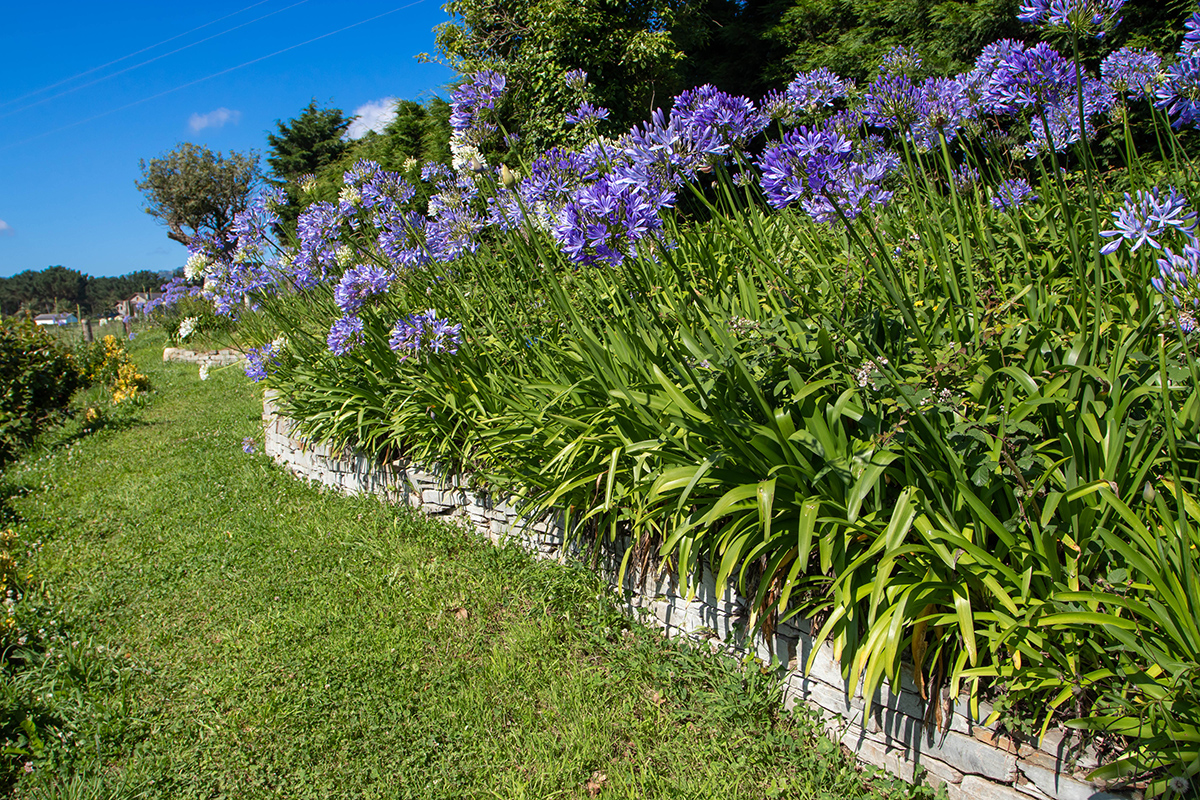Unleashing the Secret to Effective Agapanthus Farming: Idea for a Flourishing Yard
In the realm of gardening, growing agapanthus effectively calls for a calculated method that encompasses various elements of plant care. By comprehending the subtleties of agapanthus cultivation, one can create an atmosphere where these plants grow and grow generously.
Planting Agapanthus: Finest Practices
When planting Agapanthus, proper dirt prep work is essential for ensuring effective development and growth of these gorgeous blossoms. Agapanthus, generally understood as Lily of the Nile or African lily, flourishes in well-draining dirt with a somewhat acidic to neutral pH degree - Agapanthus. Before planting, it is vital to modify hefty clay dirts with organic matter such as compost or peat moss to boost drainage and give crucial nutrients for the plants
To plant Agapanthus, select an area that gets full sunlight to partial shade, as this will advertise healthy and balanced development and plentiful blooming. Dig a hole two times the diameter of the plant's origin sphere and place the Agapanthus at the very same deepness it was formerly growing. Gently backfill the opening with dirt, pushing down firmly to get rid of any type of air pockets around the origins.
Water the newly grown Agapanthus extensively and proceed to keep the dirt evenly wet, particularly throughout the plant's active expanding season. Agapanthus. Applying a balanced plant food once a month can even more sustain the plant's development and blooming. By following these ideal techniques for planting Agapanthus, you can create a magnificent display screen of these fascinating blossoms in your garden
Perfect Dirt Conditions for Agapanthus
For ideal development and flowering success of Agapanthus plants, making certain the dirt conditions are ideal is essential. Agapanthus chooses dirt that is rich in nutrients, so including a balanced fertilizer throughout the growing period can advertise healthy and balanced growth and vibrant blossoms.

Watering and Feeding Tips
To ensure healthy and balanced development and lively blossoms, proper watering and feeding methods are essential for successful Agapanthus cultivation. Agapanthus plants profit from routine watering, specifically during the growing period.
When it involves fertilizing Agapanthus, a balanced plant food with equal components nitrogen, phosphorus, and potassium can be applied in the spring to promote healthy and balanced growth and flowering. Slow-release fertilizers are optimal for providing nutrients slowly over a prolonged duration. Stay clear of over-fertilizing, as this can cause extreme foliage directory development at the expense of flowers.
Additionally, integrating raw material like garden compost right into the dirt can boost nutrient degrees and improve dirt structure, aiding in the total health and wellness of the Agapanthus plants. By complying with these watering and fertilizing tips, gardeners can guarantee their Agapanthus plants prosper and generate magnificent displays of blossoms.
Pruning and Deadheading Techniques
Correct trimming and deadheading strategies play an essential function in maintaining the wellness and appearances of Agapanthus plants, complementing the important practices of watering and fertilizing for effective growing. Pruning Agapanthus entails removing spent flower heads, dead or yellowing fallen leaves, and overall shaping of the plant to promote far better growth. Deadheading, the procedure of getting rid of discolored blossoms, not only enhances the plant's look however also encourages further growing.
When deadheading Agapanthus, it is advisable to snip off the blossom stem at the base making use of sharp, tidy shears. This procedure reroutes the plant's power from seed manufacturing back into root and foliage development, advertising a healthier and a lot more durable plant. Normal deadheading can prolong the blooming duration of Agapanthus and prevent self-seeding, which can cause overcrowding.
In terms of pruning, Agapanthus usually gain from a light trim after blooming to clean up the plant click here for info and encourage fresh growth. Cutting down the spent flower stems and removing any dead or damaged vegetation aids maintain the plant's vigor and total look. Nevertheless, it is vital to stay clear of reducing into the crown of the plant, as this can compromise its wellness.

Protecting Agapanthus From Vermins and Diseases
Executing reliable pest and condition management strategies is important to safeguarding the wellness and vitality of Agapanthus plants in cultivation. Agapanthus are normally sturdy plants, however they can still succumb to numerous bugs and diseases otherwise correctly taken care of. One typical bug that influences Agapanthus is the Agapanthus borer, a caterpillar that tunnels into the plant, creating damages to the fallen leaves and blossoms. To stop problems, regular evaluation of the plants is essential. If borers are discovered, they can be by hand eliminated, or insecticidal soap can be made use of as a control step.
In enhancement to bugs, Agapanthus are susceptible to diseases such as root rot and fungal leaf spots. By staying watchful and addressing pest and illness issues immediately, garden enthusiasts can assist their Agapanthus grow and flourish.

Conclusion
Finally, successful farming of agapanthus calls for appropriate planting methods, excellent dirt conditions, appropriate watering and feeding, regular trimming and deadheading, and defense from conditions and pests. By complying with these methods and tips, gardeners can ensure a growing garden full of attractive agapanthus blooms. Agapanthus. Bear in mind to keep regular treatment and focus to detail to promote the health and wellness and longevity of these stunning plants
When planting Agapanthus, correct soil preparation is important for guaranteeing effective development and growth of these lovely flowers.Water the recently planted Agapanthus completely and continue to maintain the soil equally moist, specifically during the plant's active growing period.For optimum growth and flowering success of Agapanthus plants, my link making sure the dirt problems are suitable is essential. When planting or transplanting Agapanthus, make certain the dirt is well-prepared to supply the required foundation for the plants to develop themselves effectively. One usual bug that influences Agapanthus is the Agapanthus borer, a caterpillar that passages into the plant, causing damages to the leaves and flowers.